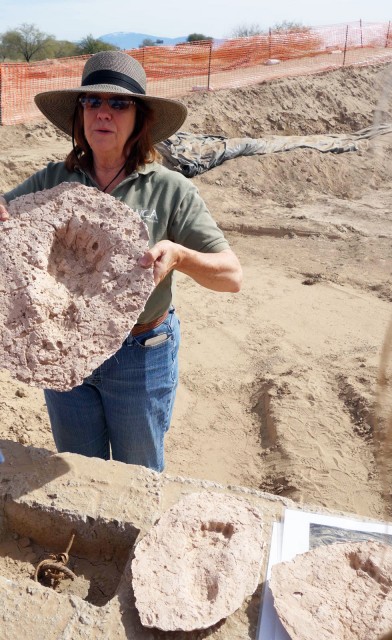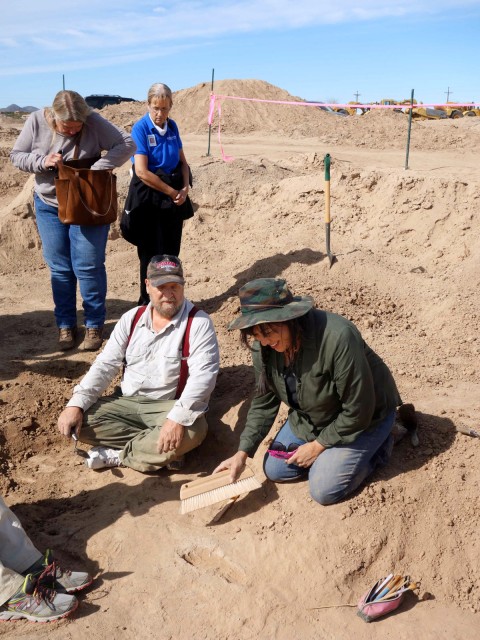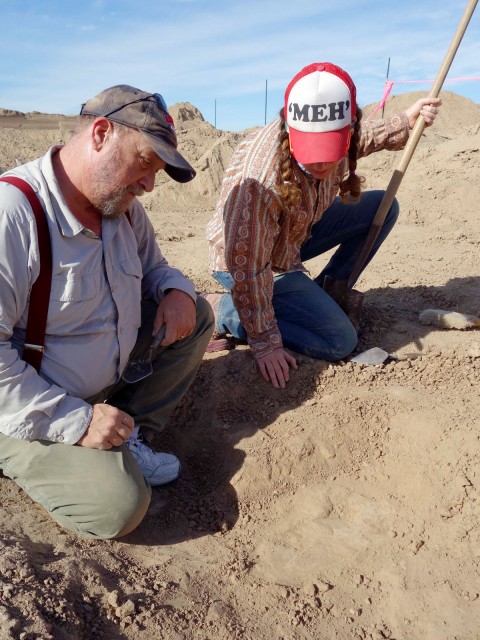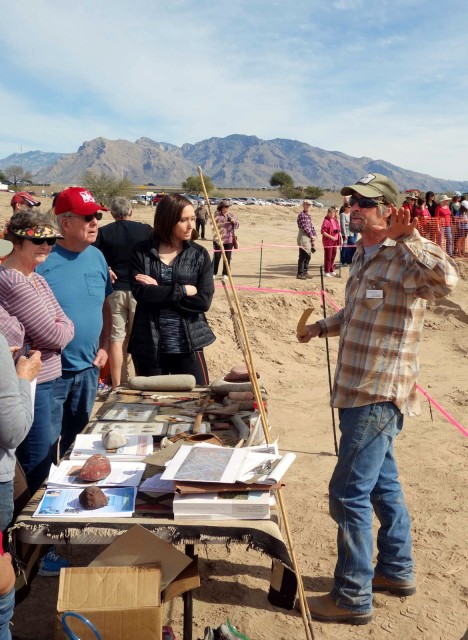- Home
- >
- Preservation Archaeology Blog
- >
- Like a Live Wire
(February 8, 2016)—Chaco Canyon, Mesa Verde, Catalina State Park’s Romero Ruin, Pueblo Grande Museum, Flagstaff’s Picture Canyon, Tubac Presidio State Historic Park—here in the American Southwest, there are ample opportunities to connect with the past.
Like most people, when I’m at one of these special places, I can’t help but think myself into a time machine. What were the people living here doing? What kind of clothes were they wearing—or not? What would I be doing?
Connecting with the past is fundamentally about sharing in the human experience. Preservation works best when we have the opportunity to not only learn about the past, but also be in its presence. Standing at Pueblo Bonito looking out across the vastness of Chaco Canyon is an experience that no lecture, book, or website can truly replace—enhance, certainly—but never replace.
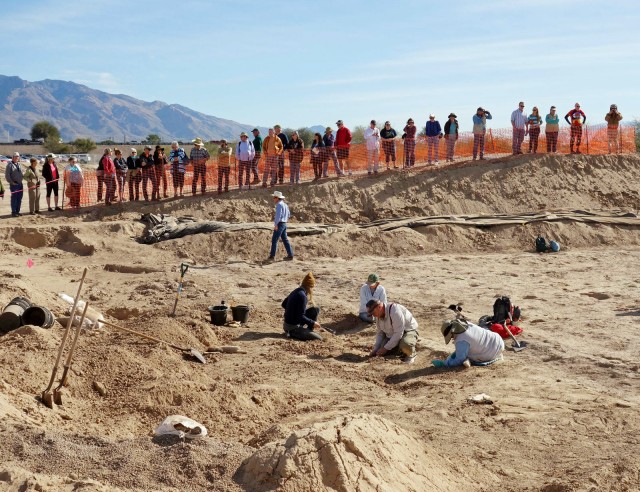
For the past month, the archaeological community has been abuzz with the discovery of ancient footprints preserved in sediments along the Rillito River. Living later in time, but in a manner much akin to the pre-village farmers at Las Capas, these farmers were some of the earliest agriculturalists in the Southwest. Between 3,500 and 2,000 years ago (what archaeologists call the Early Agricultural period), people were making the transition from a more mobile hunting and gathering lifestyle to a more settled life centered on intensive farming.
Over the last fifteen years, ideas about the Early Agricultural period have changed dramatically, based largely on the presence of extensive, 3,000-year-old irrigation systems initially discovered at the Pima County wastewater site at Roger Road. Up until that find, archaeologists had no evidence that irrigated agriculture in the Southwest began so long ago. The emergence of irrigation-based Hohokam society is less of a mystery as a result—people living here developed the technology and their cultural and economic systems over centuries.
What makes this recent discovery even more exciting is that in addition to the irrigation canals, fields, and planting pits, all of which were visible at Las Capas, the sediments here revealed something far more startling: preserved human footprints.
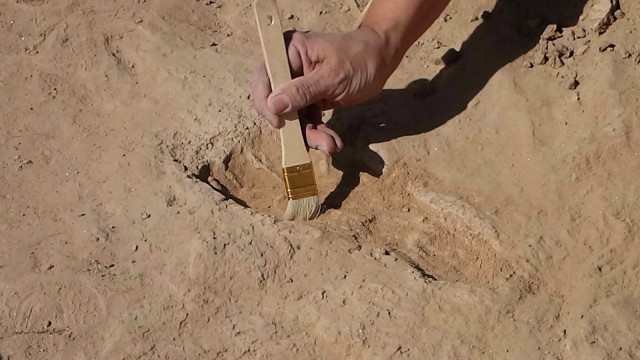
Not unlike the process that preserved the famous Laetoli (“Lucy”) footprints in Tanzania (believed to represent a very early hominin ancestor), the footprints along the Rillito were formed by people walking in moist soil in a recently irrigated field or following a rainstorm (Lucy’s were made at the edge of now-ancient shoreline). An extensive but slow-moving flood subsequently deposited inches of fine sandy sediment. Over time, that sandy sediment dried and compacted the muddy soil, protecting and preserving the imprints of human feet in place (in Lucy’s case it was a fine layer of volcanic ash from a nearby volcanic eruption).
In an area half the size of a soccer field (at least, that is the area archaeologists have thus far been able to expose), we can see numerous tracks of varying size heading in clear directions. Some footprints are so small it looks like a toddler was in tow, and some canine prints suggest that maybe the family dog was there, too.
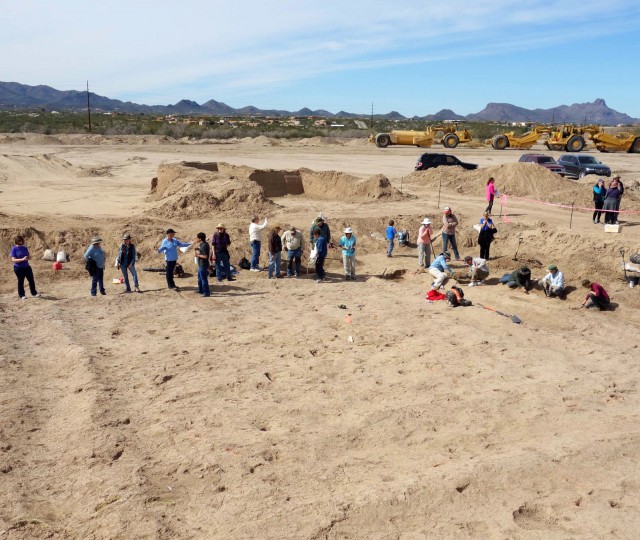
This past Sunday, a friend and I joined several volunteers to assist in uncovering more of the site—and lo and behold, we had the excitement of “finding” several more footprints. Here before our very eyes were not just the material remains of people from the past, but something more—the palpable presence of people. Almost as if they had walked there last week.
|
|
|
Seeing your footprints in the mud may be a near-universal human experience. When you were a kid, was there any more enjoyable experience than your first time at the water’s edge, squishing and wriggling your toes in the mud or wet sand? It was easy to envision this family, out early in the morning sun, enjoying the scent of the desert after a rain, keeping the water flowing to the fields and maybe planting seeds or plugs in the planting pits. For me, the sight of their footprints was a connection to the past that felt like a live electric wire.
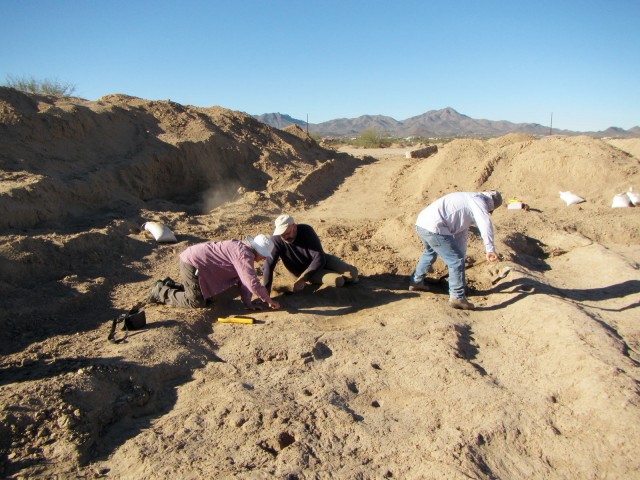
All around us volunteers, hundreds of visitors toured the site with Pima County officials and archaeologists from SWCA Environmental Consultants, which first exposed the tracks. Our maestro of the past human experience, Hands-On archaeologist Allen Denoyer, shared his replica projectile points and hunting tools, which the ancient farmers would have been using at the time these fields were cultivated. Listening to the questions of each tour group, I heard over and over again: Were they wearing anything on their feet? Did they have a village nearby? What crops were they growing?
What a wonderful human experience, shared across millennia, and among us that day.
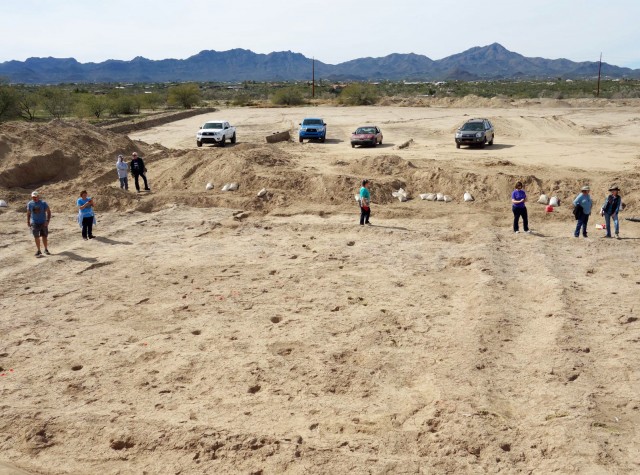
Explore the News
-
Join Today
Keep up with the latest discoveries in southwestern archaeology. Join today, and receive Archaeology Southwest Magazine, among other member benefits.
